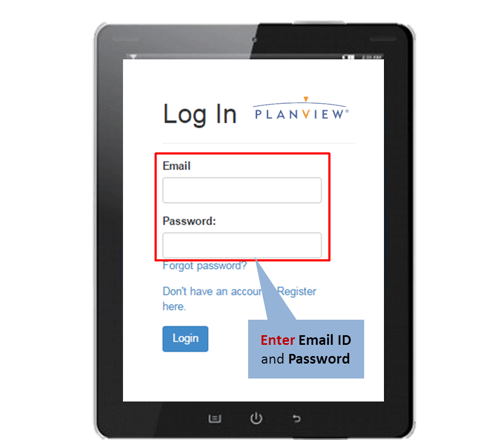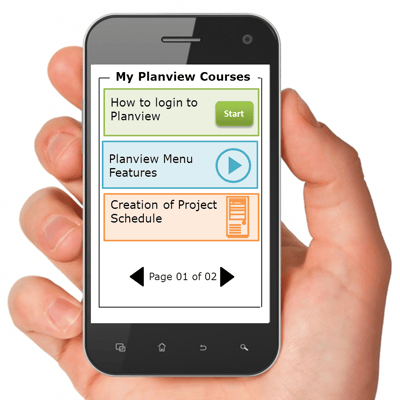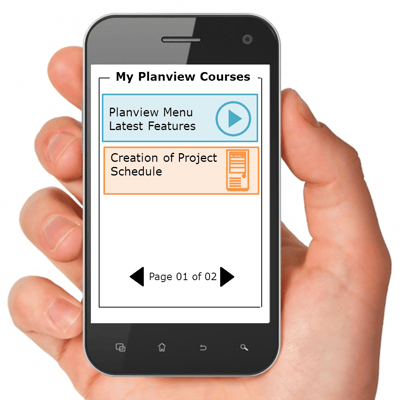Why E-learning Works For PlanView Training

Many organizations implement software for project planning and resource management, PlanView is one such enterprise software. PlanView helps organizations in providing end-to-end portfolio and resource management solutions; with its software you can optimize projects, applications, people, finance and assets to name a few.
Although the software PlanView is a general platform, they also let organizations customize the software to suit their organizational needs and structure. This helps organizations leverage PlainView to its fullest extent. However, this very customization of the tool becomes a hindrance when it comes to training. Plenty of off-the-shelf general training programs are available for PlanView; however these trainings don’t address the training needs at an organizational level.
Every organization has a different process or way of using PlanView, in the same way, their training too needs to be as unique as the customized tool. Having an off-the-shelf training program for customized software is like wearing a woolen sweater in summer! By using e-learning you can create customized courses for your customized enterprise software. Here’s how.
The E-Learning Advantage
Classroom and ILT sessions not only cost a bomb, but are also quite time consuming. This makes it harder for your employees to strike a balance between work and training, often resulting in stress and low productivity. E-learning facilitates anywhere, anyplace, anytime learning! Your PlanView instructor cannot always be around for every employee of yours. With e-learning, you can break the barriers of space and time and deliver courses that are accessible 24*7 by your learners. This gives your employees a sense of control over their own training and also helps them shuttle time between their work and training at their own convenience.

Leveraging Role Based Training
Many organizations provide training with the “one size fits all” approach, but that doesn’t really help employees. PlanView training should be done at a more individual level based on their roles within the tool. PlanView has several roles and each role is different based on the user. For instance, creation of a project schedule in PlanView is done by the Project Manager, however the project management forecast needs to be approved by the Finance Controller for the project plan to be approved. There cannot be a single content or process that demonstrates the functions of both roles; hence the best option is to opt for role-based training where each role is treated exclusively.
Role-specific learning creates a more balanced training program where an employee needs learn only about his functions in the tool.

Hands on End-User Training
Imagine this, you’re working on the live PlanView software and don’t quite remember the next step you need to do. You make a guess and select the wrong option and disaster strikes! This mistake takes days to rectify in the software and you’re behind your schedule to complete your work. This happens because organizations only show end-users how to use the software, there is almost little or no chance for them to try out the software to get acquainted with the tool. It is easier to make mistakes and learn from them in a simulated environment rather than making the same mistake on the live software. To avoid mistakes on the live software, you can create e-learning courses to show virtual reality with software simulations where your learner has the chance to learn by trial and error in a fail-safe environment.

Online Curriculum Courses
Your employees need to juggle their time between work and training, so creating hour long software simulation courses will be a bane to the learner. Don’t have your entire training program cramped in a single course. You can break your course into small modules and create a curriculum that covers a single aspect of the software at a time. For example “Entry of Attributes Creation” can be the first module of your curriculum, once your employee has finished the module he can then move on to “Creation of Project Schedule”; such kind of learning reduces learner stress and provides immediate information.

Easy to Update
As your PlanView software is customized, it is highly likely that at some point of time there will be a change in the process and this also needs to be updated in your training modules. As your curriculum modules address one step of the process, it will be easy to update them and share the information in a jiffy. For instance, when a new feature is added to the software, you can make the necessary changes and update your course quickly. This helps keep your employees informed and be up to date on the happenings in the software.

Implementing PlanView without the right training is not the right way to go. By delivering role-based hands-on training online modules aided by continual updates, you can leverage the PlanView software to the best of its capabilities. Have anything to say? Please do share!





